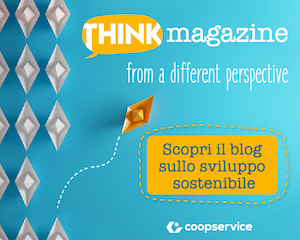Leadership, Creativity & Innovation: Individual and organization factors
INDIVIDUAL FACTORS
Individual factors are defined as the same individual psychological traits, being of inner origin, and mostly exercised by individual control. Among others those are intrinsic motivation, individual’s cognitive style, problem-solving style, employees’ self-efficacy, biological characteristics and intelligence (Oldham & Cummings, 1996; Scott & Bruce, 1994; Turney & Farmer, 1999).
Some researchers have suggested new foci in the relationship between individual level factors and domain specific knowledge. For example, Gardner (1993) said that domain specific knowledge reflects an individual level of education, training, experience and knowledge within a particular context. While Perkins (1986) has suggested that a variety of experiences, viewpoints and knowledge reinforces the use of experimentation and divergent problem-solving skill. It can develop an individual cognitively, so that employees are more likely to use multiple and diverse perspective with more complicated schemas.
ORGANIZATION FACTORS
The factors classified under organizational level mainly refer to the role of leadership, group processes, organizational climate, culture and job characteristics. (Amabile,1998; Jung, 2001; Mumford & Gustafson, 1988, Oldham and Cummings (1996), Scott & Bruce, (1994).
Among the factors that influence employees’ creativity and innovative behavior, many researchers have identified leadership as one of the most important factor (Amabile,1998; Jung, 2001; Mumford & Gustafson, 1988). Oldham and Cummings (1996) identified leadership as a potent determinant for employees’ creativity. Specifically, transformational leadership was recognized as to have strong impact on organizational innovation in terms of strategy, organizational structure, culture, climate and resources (Jung, Chee & Wu., 2003). Ryan and Deci, (1987) stated in particular, that supervision that is supportive is expected to enhance creative performance.
On the other hand, supervision that is controlling or limiting is expected to diminish creative performance (Deci & Ryan, 1987; West & Far, 1987). When supervisors are supportive they show concern for employees’ feelings and needs, encourage them to voice their own concerns, provide positive, mostly informational feedback, and facilitate employees’ skill development (Deci & Ryan,1987).
Schein (1992) stated that organizational leaders are a key source of influence on organizational culture. While, Yukl (2001) said that by creating and sustaining an organizational climate and culture that nurtures creative efforts and facilities diffusion of learning, leaders can significantly boost organizational creativity.
Feedback and recognition from supervisors, specifically, have been found to play an important role for increasing employees’ believe and motivation to come up with new suggestions, new ideas or new problem –solving styles (Jing & Zhou, 2003), while West (1989) found social support from supervisors is a predictor of innovation amongst community nurses (West & Farr, 1990). According to Amabile (1986) leadership is one of the most important if not the most important dimension for organizational creativity.
She found that employees’ perceptions of team leader support were more positive when the leader engaged in four types of effective behavior:
-
- monitoring the work effectively (giving timely feedback and reacting to problems in the work with understanding and help);
-
- providing socio-emotional support (showing support for a team member’s actions or decisions; helping alleviate stressful situations for subordinates, socializing; keeping team members informed about stressful situations, addressing subordinates’ negative feelings; and disclosing personal information);
-
- recognizing good work privately and publicly; and
-
- consulting subordinates about the work (asking for team members’ ideas and opinions; acting on subordinates’ ideas or wishes).
When supervisors provide developmental feedback, they are essentially engaging in a practice that is informational in nature they provide employees with behaviorally relevant information that might lead to the improvement of their performance in the future in the absence of pressure for a particular outcome.
By exploiting both direct and indirect ways, supervisors can get employees to motivate intrinsically: a direct influence can be, for example, the catering employee’s intrinsic motivation and higher level needs to achieve creative performance (Tierney et al., 1999).
By indirect influence it is possible to mention work environment that encourages employees to try out different approaches without worrying about being punished just because outcomes are negative (Amabile, Conti, Coon, Lazenby & Herron,1996). Finally, leaders can develop and maintain a system that values and rewards creative performance through compensation and other human resource-related policies. When a company provides intrinsic and extrinsic rewards for efforts by employees to acquire new skills and to experiment with creative work approaches, employees desire to engage in creative endeavors (Jung, 2001; Mumford & Gustafson, 1988). Thus, leadership support will stand for enabling extrinsic motivation that can be conductive to the creativity and innovative behavior.

